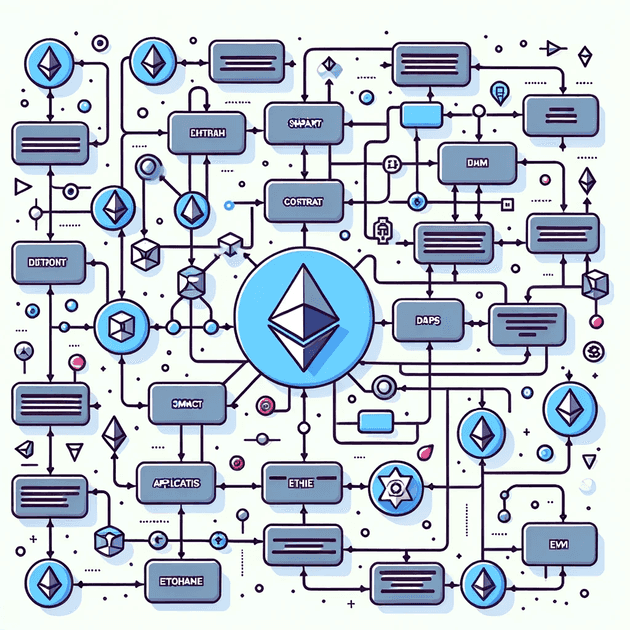As the world of blockchain technology continues to evolve, Ethereum remains at the forefront, offering a versatile platform for building decentralized applications (DApps). One of the key challenges in Ethereum application development is choosing the right architecture to ensure scalability, security, and usability. In this article, we'll delve into crucial considerations for application architecture on Ethereum, including token considerations, general architecture choices, and scaling platforms.
Token Considerations
Tokens are the lifeblood of many Ethereum applications, enabling a wide range of functionalities from decentralized finance (DeFi) protocols to non-fungible tokens (NFTs) representing unique digital assets. When designing an application architecture that involves tokens, several considerations come into play.
Features:
-
Fungible vs. Non-Fungible: Decide whether your tokens will be fungible (interchangeable) or non-fungible (unique). Fungible tokens are ideal for representing currencies or commodities, while non-fungible tokens are best suited for representing ownership of digital or physical assets.
-
Split Locked Value: Determine whether you need to split locked value across multiple tokens, allowing users to access and utilize different parts of the value.
-
Data Attached: Consider whether your tokens will carry additional data on-chain, such as metadata or provenance information for NFTs.
-
P2P Transferability: Determine whether your tokens should be peer-to-peer transferable or if they come with certain restrictions on transfers.
-
Revocable by Issuer: Evaluate whether token revocation by the issuer is a necessary feature for your application, such as in the case of security breaches or regulatory compliance.
Issuer Constraints:
When designing your token architecture, keep in mind various issuer constraints:
- Regular Restrictions: Ensure compliance with regulatory frameworks and any restrictions imposed by jurisdictions.
- Custody: Determine whether the issuer will hold custody of the tokens or if users will control their own tokens through private keys.
- Security: Implement robust security measures to safeguard tokens against hacks and unauthorized access.
- Performance / UX: Strive for a balance between performance and user experience, as slow transactions and high gas fees can deter users.
- Trust: Build mechanisms to establish trust between users and the token issuer, which is especially important for widespread adoption.
General Architecture
When it comes to designing the general architecture of your Ethereum application, two common approaches are often considered:
1. Simple Architecture:
Users interact with a backend server that communicates directly with the Ethereum network. This architecture is suitable for applications where real-time interactions are not critical, and users are willing to wait for on-chain confirmations.
2. API Provider:
Users interact with a backend server that communicates with an API provider like Infura, which then interfaces with the Ethereum network. This architecture helps offload the complexity of Ethereum interactions from your backend, potentially improving scalability and reliability.
Both architectures have their merits and trade-offs. A "straight through processing" approach involves minimal intermediary steps and is straightforward to implement. On the other hand, a domain-specific architecture might involve additional processes before settling transactions on-chain, which can be beneficial for certain applications requiring more sophisticated logic.
Scaling Platforms
As Ethereum faces scalability challenges due to network congestion and high gas fees, several scaling platforms have emerged to address these issues. Here are two notable options:
1. Layer 2 (L2) Platforms:
L2 solutions, such as Optimistic Rollups and zkRollups, provide a way to process transactions off-chain while maintaining the security of the Ethereum mainnet. L2 platforms offer faster and cheaper transactions, making them a compelling choice for applications that require high throughput.
2. L2 State Channels:
State channels enable off-chain interactions between users, with only the final state being settled on the Ethereum mainnet. This approach significantly reduces transaction costs and allows for near-instantaneous transactions, making it suitable for applications like gaming and microtransactions.
Conclusion
Designing a robust application architecture for Ethereum involves careful consideration of token features, issuer constraints, and general architecture choices. By weighing the advantages and challenges of different approaches, developers can create DApps that provide a seamless and secure experience for users. As the Ethereum ecosystem continues to evolve, staying informed about emerging scaling solutions like Layer 2 platforms will be crucial for ensuring the scalability and sustainability of Ethereum applications in the future.
